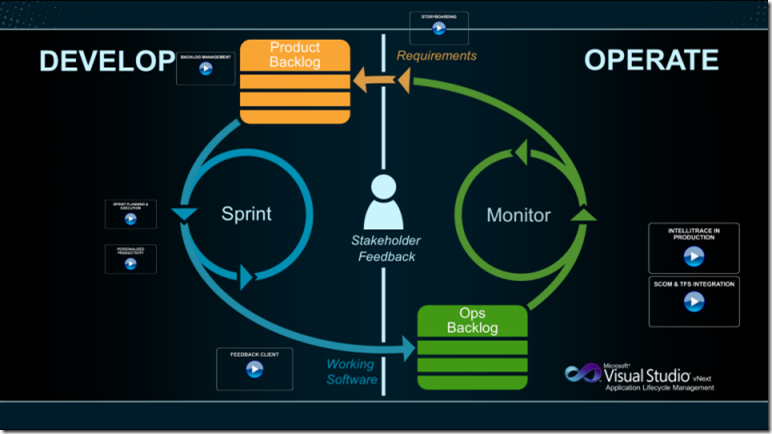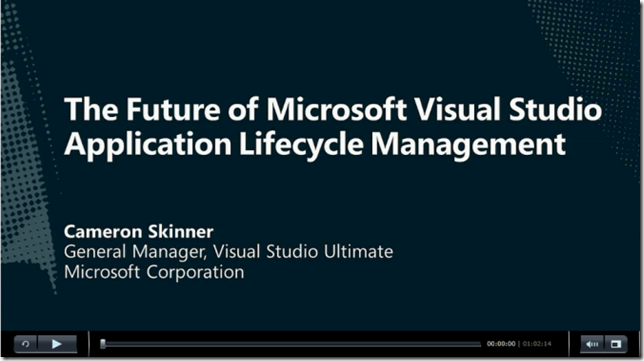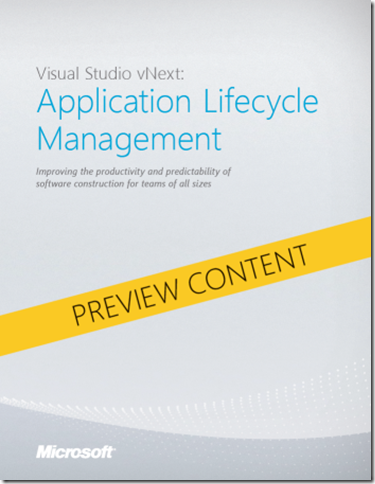3 Easy Ways to Learn About Visual Studio vNext Application Lifecycle Management
As you may have noticed, last week at TechEd North America we began to unveil the application lifecycle management (ALM) capabilities of Visual Studio vNext. It was an exciting week with a flurry of activity! I had the pleasure of working on our ALM demo for Jason Zander’s keynote, and co-presenting a foundational session with Cameron Skinner. Now that the dust has settled, I wanted to provide you with 3 easy ways to come up to speed on what we’ve announced so far.
I should preface this by saying that you don’t have to look at everything in here to understand the vision; these are simply three different formats for consuming what is – essentially – the same set of information, with varying levels of depth.
1. SpeakFlow: A SpeakFlow is a Silverlight-powered way of delivering rich, interactive content. This SpeakFlow allows you to follow the lifecycle – from development to operations and back again – and view short demonstrations of how Visual Studio vNext will help you embrace better application lifecycle management. I suggest starting at the “STORYBOARDING” video (at the top) and then following the circle counter-clockwise.
Tip: To go up a level after drilling in, use your mouse wheel or the UP key on your keyboard.
The SpeakFlow diagram can be downloaded for offline use from here. (46MB)
2. Foundational Session: This 60-minute, demo-heavy presentation by Cameron Skinner and me paints a broader picture of our ALM story than we had time for during the keynote. The demos here are almost identical to the demos from the SpeakFlow above, but with a bit of a broader story woven around them, and some nice Q&A at the end.
3. Whitepaper : Our marketing team put together a great PDF whitepaper which reinforces the value propositions for what we’re delivering in vNext. I carry a copy on my Kindle.
I hope you enjoy these materials, and more importantly, the vision they present for the future of Visual Studio application lifecycle management.


